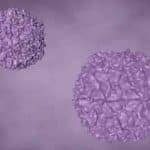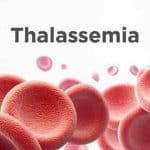ISLAMABAD, Jan 16 (Online): Even with the renovations of modern medicine, certain chronic conditions, like osteoarthritis, remain difficult to manage. Research areas include finding ways to halt joint damage and improve pain symptoms.
A study published in NatureTrusted Sourceexamined how targeting the sodium channel Nav1.7 could help treat osteoarthritis. Using mouse models and cell analysis, researchers determined that this sodium channel is present in neurons and cartilage cells and that inhibiting it may be the key to osteoarthritis treatment.
The researchers further found that blocking the action of these sodium channels with the medication Carbamazepine can help minimize damage to joints and improve pain in osteoarthritis. This medication typically treats epilepsy, but this research demonstrates its potential to be used to treat other chronic conditions.
While this research is preliminary, it points to potential treatment options for osteoarthritis.
The target of a new osteoarthritis treatment
The current study focused on a way to slow the joint damage caused by osteoarthritis rather than focusing on pain relief alone. Researchers noted that osteoarthritis involves cartilage breakdown and pain. At the cellular level, this involves chondrocytesTrusted Source, or cartilage cells and neurons, which are involved in the pain response from osteoarthritis.
Researchers were particularly interested in understanding the presence and work of voltage-gated sodium channelsTrusted Source in the cartilage cells. These sodium channels are a specific type of protein found in cell types.
To start, researchers examined chondrocytes in people with osteoarthritis. They found that the Nav1.7 sodium channels are present in chondrocytes and that the amount is increased in osteoarthritis.
Using mouse models, researchers genetically deleted Nav1.7 and studied the results. They found that in dorsal root gangliaTrusted Source neurons, the junction boxes for nerves as they exit the spinal column, this deletion contributed to pain reduction. In the chondrocyte cells in mice, the deletion contributed to much less structural damage and progression of osteoarthritis and less pain-related behavior from the osteoarthritis.
The results concluded that inhibiting these channels could be the key to slowing osteoarthritis progression and minimizing pain. Researchers looked at several components to test this hypothesis and some of the underlying mechanisms involved.
Dr. Yoon noted the following:
“The study investigating Nav1.7 is important to create disease modifying medicines for osteoarthritis. Understanding the cellular mechanisms underlying osteoarthritis and creating targeted therapies to address both pain and the actual disease itself will be necessary to modify the impact of this disease.”
Carbamazepine for osteoarthritis
One key area of interest is that the researchers were then able to test if the drug Carbamazepine affected osteoarthritis progression in mice. Carbamazepine inhibits Nav1.7 channels, and doctors use it in the treatment of conditions like epilepsy and bipolar disorder.
They found that the Carbamazepine helped with pain and lowered amounts of cartilage loss.
Study author Chuan-Ju Liu, PhD, Charles W. Ohse Professor and Translational Orthopaedic Lab Director in the Department of Orthopaedics at Yale University School of Medicine, explained the key findings of the research to Medical News Today:
“Our discovery of the sodium channel Nav1.7 as a target for both pain relief and disease modification represents a significant stride towards a novel therapeutic strategy to slow down or prevent osteoarthritis progression while concurrently alleviating associated pain. Inhibiting Nav1.7 channels with specific inhibitors has shown promising results in slowing joint damage across various animal models of osteoarthritis. Expanding on this, our investigations with the non-specific Nav-blocking drug, Carbamazepine, also demonstrated a robust protective effect against joint degeneration in mouse osteoarthritis models.”
Needs to be tested in humans
While this research is promising, it also has certain limitations. The main limitation is that the findings are derived from mouse models. Researchers also only included cell samples from a limited number of patients, which could have influenced the study’s findings. Experts must be cautious and do more research before seeing how this data applies to people with osteoarthritis.
Dr. Liu noted the following areas of continued research:
“There is still a long way to go in translating current findings from animal models to human applications. We need to understand why a low number of sodium channels has such significant effects on chondrocyte biology. Additionally, further testing is essential to explore the comparative effects of various sodium channel inhibitors on chondrocytes, cartilage, and different osteoarthritis models.”
“Our next steps involve assessing new therapeutic strategies focused on blocking Nav1.7 channels and exploring gene therapy approaches to reduce the production of these channels. This research aims to bridge the gap between animal models and human treatments, bringing us closer to a future where osteoarthritis is more manageable, enabling patients to lead healthier and happier lives.”
— Dr. Chuan-Ju Liu, study author
How to manage osteoarthritis symptoms
OsteoarthritisTrusted Source is a common subtype of arthritis. When people have osteoarthritis, there is breakdown and damage in the joints, leading to pain, swelling, and movement struggles. Osteoarthritis affects various joints and can range in severity.
Follow the PNI Facebook page for the latest news and updates.








